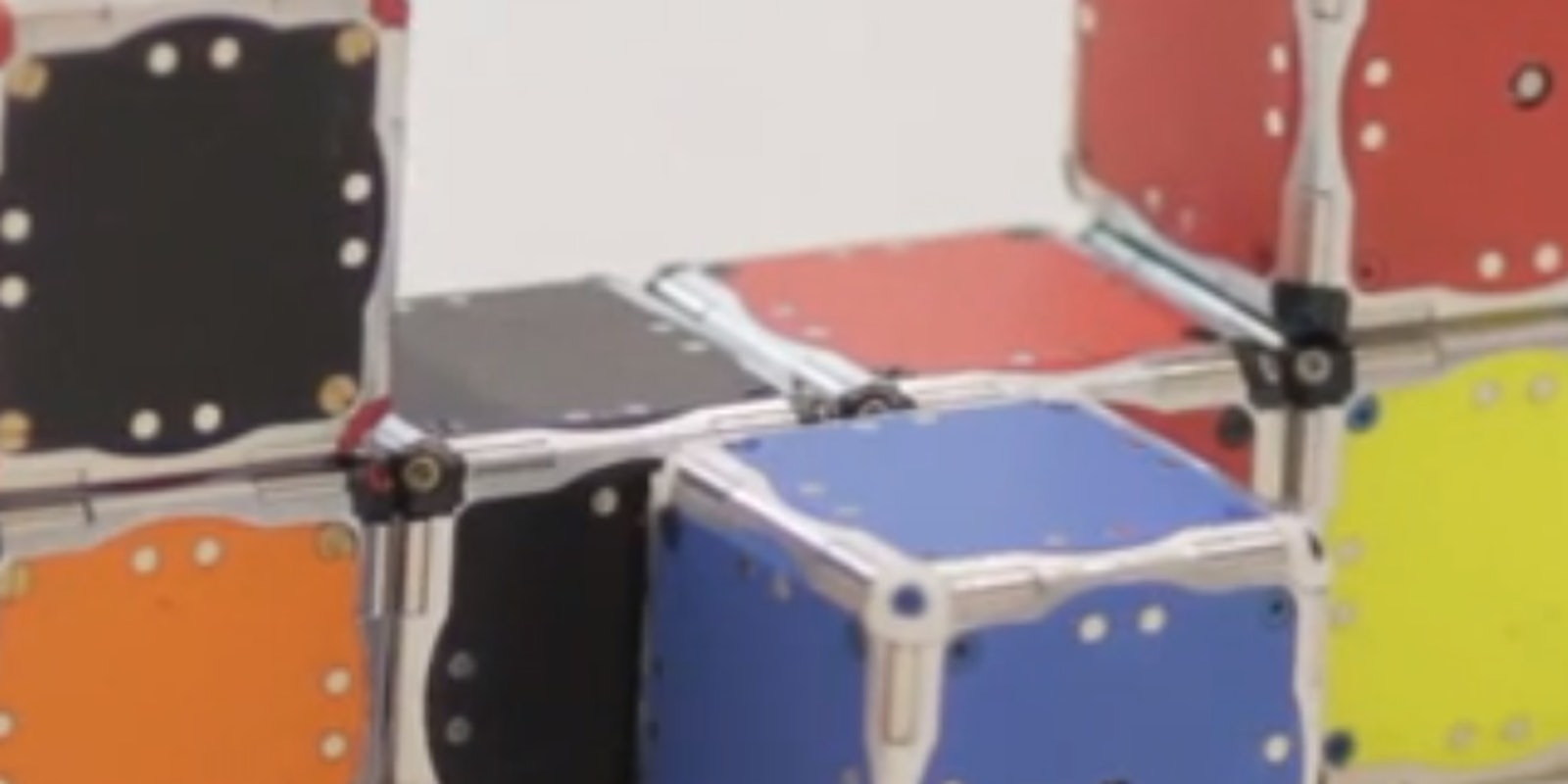Here’s a surefire way to transform any given impossibility into a reality: tell an MIT senior it can’t be done. That was the starting point for John Romanishin, now a research scientist, who along with postdoc Kyle Gilpin will soon present a paper on his new modular robots, which are capable of independent movement and shape formations.
We’ll let MIT News explain the science behind these boxy critters:
Known as M-Blocks, the robots are cubes with no external moving parts. Nonetheless, they’re able to climb over and around one another, leap through the air, roll across the ground, and even move while suspended upside down from metallic surfaces.
Inside each M-Block is a flywheel that can reach speeds of 20,000 revolutions per minute; when the flywheel is braked, it imparts its angular momentum to the cube. On each edge of an M-Block, and on every face, are cleverly arranged permanent magnets that allow any two cubes to attach to each other.
The M-Blocks represent a stunning breakthrough for the modular-robotics community, and apparently the trick to this design is to sacrifice “the principle of static stability.” Nope, nothing scary about that sentence.
The possible applications are endless, from a self-assembling chair to self-transporting cameras and batteries to Terminator 2-like liquid steel made of swarming miniaturized bots. For now, though, you can freak yourself out with this video the M-Blocks in action. We can only hope that after the robot revolution, these things choose to rule us benevolently.
H/T: MIT News | Photo via MITNewsOffice/YouTube


